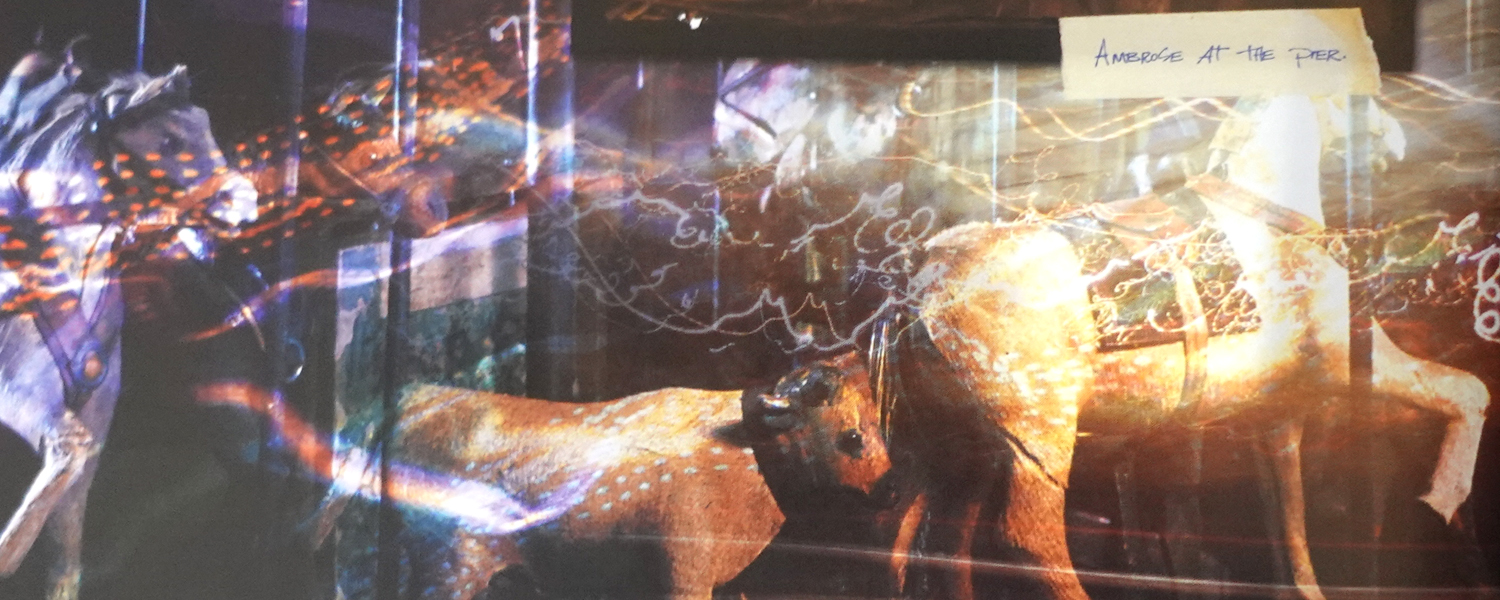This is Part 4 of our ‘Classic Adventures’ series, covering excellent horror RPG adventures from the past and present!
[ Read: Part 1: Fantasy ]
[ Read: Part 2: Sci-fi ]
[ Read: Part 3: Cthulhu Mythos ]
Part 4: Classic Horror RPG adventures
Horror gaming is almost as old as the roleplaying hobby itself, and for good reason: who can resist the opportunity to scare (or be scared) in the comfort of their own home? Chaosium’s Call of Cthulhu may be the best-known horror RPG but it’s far from the only one.
Here are some of the best campaigns for other horror RPG adventures:
Ravenloft
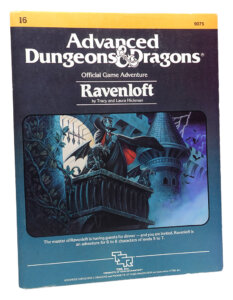
- Game: Advanced Dungeons & Dragons (AD&D) 1st Edition
- Publisher: TSR
- By: Tracy and Laura Hickman
- Released: 1983
Overview
Trapped in the strange land of Barovia, a team of adventurers slowly uncovers the mystery of Count Strahd von Zarovich. How did this once brave and noble warrior become the first vampire? What tragic events turned him into a monster that must be destroyed?
These discoveries, and more, await. Welcome to Barovia.
Why it’s a classic
The original Ravenloft module gave birth to a series of sequels, sourcebooks, novels, board games and a new campaign setting for AD&D. First published for AD&D 1st edition, it’s been reprised and revised for every edition since. The latest iteration is The Curse of Strahd and the accompanying setting book, Van Richten’s Guide to Ravenloft, for D&D 5th edition. But if you want to experience D&D’s original gothic horror setting in its purest form, you can’t go past the original.
Design-wise it’s a great example of how to combine plot and sandbox elements. Using Tarot cards to determine certain plot elements adds replayability and Strahd himself is one of D&D’s most memorable and – dare we say it – iconic villains. The Hickmans’ goal was to take an over-used monster type (the vampire) and make it scary again. They succeeded – beyond their wildest dreams, we suspect.
Impossible Landscapes
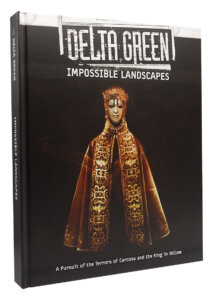
- Game: Delta Green
- Publisher: Arc Dream
- By: Dennis Detwiller
- Released: 2020
Overview
xxxxxxxxxxxxxREDACTEDxxxxxxxxxxxx Delta Green’s mission is to xxxxxxxxxxxREDACTEDxxxxxxxxxxxx, protect America from paranormal and extra-terrestrial threats. xxxxxxxxxxx xxxxxxxxxxxx xxxxxxxxxREDACTEDxxxxxxxxxx xxxxxxxxxx xxxxx. Agents are frequently called upon to risk life, limb, xxREDACTEDxx, and sanity to complete their missions. But beyond the threats, xxREDACTEDxx, injuries, and horrors lies Carcosa, home to the King in Yellow. There lies the answer to… everything. Won’t you come?
Why it’s a classic
Delta Green began as a setting and sourcebook for Call of Cthulhu but it has evolved into a fully-fledged, stand-alone game. Impossible Landscapes may well be its ultimate expression. Sitting comfortably among the “greats” of RPG campaign design, it takes players through four interlinked scenarios on a sanity-shattering odyssey through time, madness, and the veil of reality itself.
At the end – or perhaps the beginning – of it all lies the fabled land of Carcosa and the King in Yellow. PCs may or may not come through in one piece, but your players may also find their views on roleplaying … let’s just say “altered” … as a result.
And so, dear GM, may you!
The Black Madonna
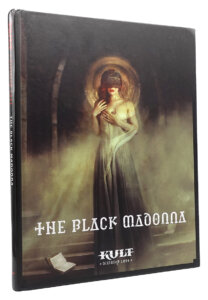
- Game: KULT: Divinity Lost 4e
- Publisher: Modiphius Entertainment
- By: Gunilla Jonsson, Michael Petersén, Marco Berhman, Mattiaz Fredriksson, Robin Liljenberg, Petter Nallo
- Released: 2019 (English language edition)
Overview
The Black Madonna takes place in 1991 as a group of investigators try to discover what really happened in Leningrad fifty years ago. Why did all the candles in all the churches in the city extinguish on near year’s eve? Why did the saints’ faces turn black?
And what do the Death Angel Chagidiel and the Archon Binah, and their servants, have to do with it?
Why it’s a classic
The Black Madonna is the definitive KULT storyline. Originally published in Swedish, it’s a detailed campaign in six parts. It showcases this dark, dark, DARK RPG’s stylish and disturbing take on horror that combines action, the occult, and the occasional full-blown freak-out.
Featuring investigation, combat, dream sequences and flashbacks, The Black Madonna’s design and layout makes it easy to read and understand. This ease translates into play by helping the GM find information quickly and manage their game more efficiently. Pick it up if you want a horror RPG campaign that’s accessible, stylish, visceral, and very, very, VERY scary.
Orpheus

- Game: Orpheus
- Publisher: White Wolf Game Studio
- By: Bryan Armor, John Chambers, Genevieve Cogman, Richard Dansky, B.D. Flory, Harry Heckel IV, Ellen Kiley, James Kiley, Matthew McFarland, Dean Shomshak and C.A. Suleiman
- Released: 2003 (Orpheus, Crusade of Ashes, Shades of Grey, Shadow Games), 2004 (The Orphan-Grinders, End Game)
Overview
This is Radio Free Death, The Voice of the Afterlife. Science thinks it’s shattered the barrier between life and death, but it’s only opened the floodgates. Stop meddling with the affairs of ghosts and close the doors before something follows you back through.
Something followed you back through.
Players work for the Orpheus Group, ‘projecting’ their souls from their bodies to provide services for anybody who can pay their price. But now things are going awry. An invisible crusade is underway and no-one, living or dead, is safe. Can you save the world from annihilation?
Why it’s a classic
Orpheus is a spiritual successor (no pun intended) to White Wolf’s Wraith: The Oblivion. It’s a game and campaign in six volumes—Orpheus, Crusade of Ashes, Shades of Grey, Shadow Games, The Orphan-Grinders, End Game—telling an epic story that continually re-shapes the setting.
The first volume, Orpheus, is a complete game in and of itself. With it, you can tell just about any kind of ghost story you like. Each of the following books adds new enemies, allies, backgrounds, rules, and secrets. More importantly, each advances the overall storyline, with epic, world-changing events unfolding with the players’ help. It’s a brave, unique, and subtly terrifying story—and one that horror aficionados and dedicated GMs alike shouldn’t miss.
The Dracula Dossier
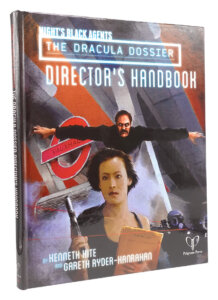
- Game: Night’s Black Agents
- Publisher: Pelgrane Press
- By: Kenneth Hite (Director’s Handbook, Dracula Unredacted), Gareth Ryder-Hanrahan (The Hawkins Papers, The Edom Files, The Edom Field Manual)
- Released: 2015 (Director’s Handbook, Dracula Unredacted, The Hawkins Papers), 2016 (The Edom Files, The Edom Field Manual)
Overview
Dracula is real. The book by Bram Stoker was originally a report compiled for British Intelligence. After trying – and failing – in the 1890s to recruit the Count as an ‘asset’, operatives terminated the vampire. The powers that be then decided to release the report in a ‘fictionalised’ form to throw other agencies off the trail.
But somehow, Dracula lives. Now your agents must hunt him down once again and this time, finish the job. If you fail, Britain will fall—and become the lord of the undead’s playground.
Why it’s a classic
Apart from being perhaps the cleverest idea for a campaign ever, The Dracula Dossier has perhaps the cleverest supplement ever. Dracula Unredacted is a copy of Bram Stoker’s novel – with letters, diary entries, recordings and other documents previously suppressed by Her Majesty’s government.
We mean “cleverest” as a compliment in every way. Kenneth Hite is a noted authority on horror and horror gaming and this campaign stands out as a masterwork. Night’s Black Agents uses Robin Laws’ Gumshoe rules, making this a collaboration of sorts between two designers—and friends—acknowledged as being among the industry’s greats. With supplementary material by roleplaying luminary Gareth Ryder-Hanrahan, you really can’t go wrong.

Written by Michael B.
Michael’s from Sydney, Australia. Over the years he’s organized game conventions, contributed to magazines, and written supplements for White Wolf and Dream Pod 9. Now that he’s done with this article he’s going to retreat to his padded cell for a while.


